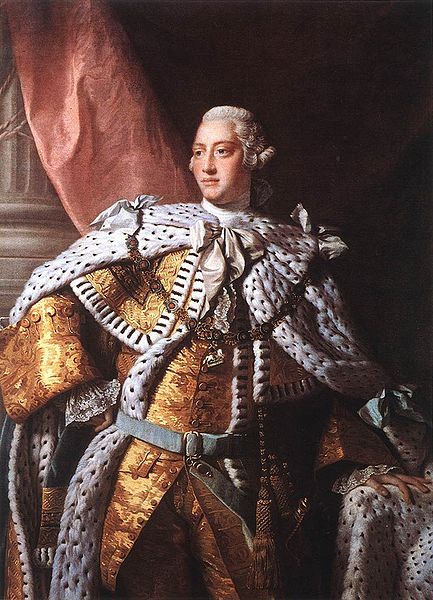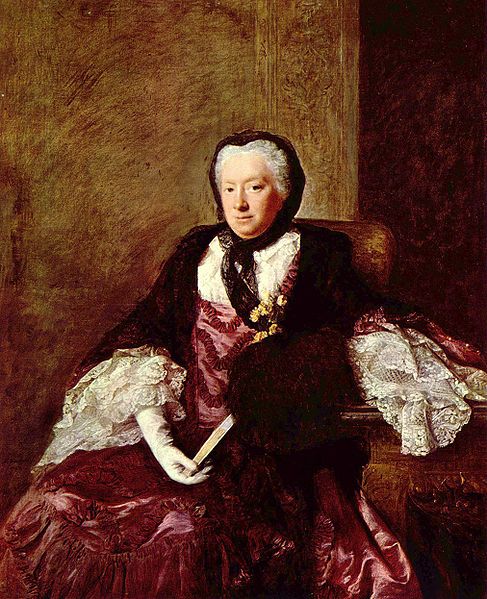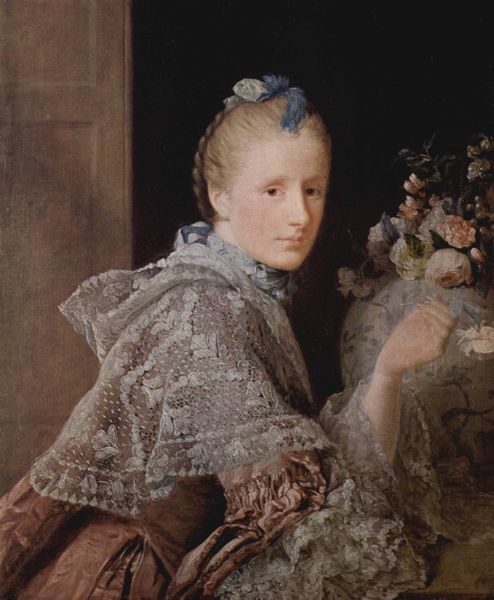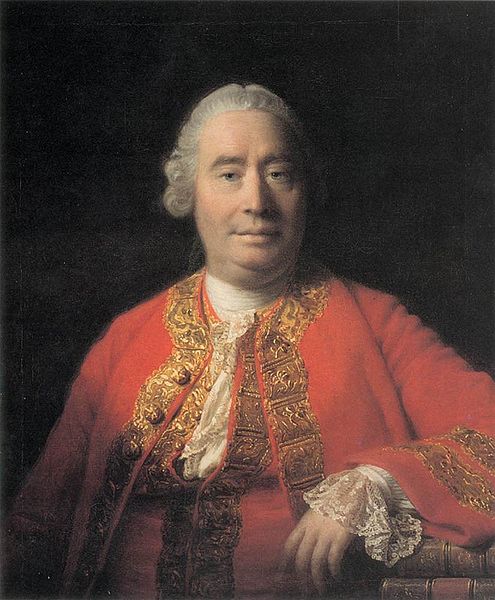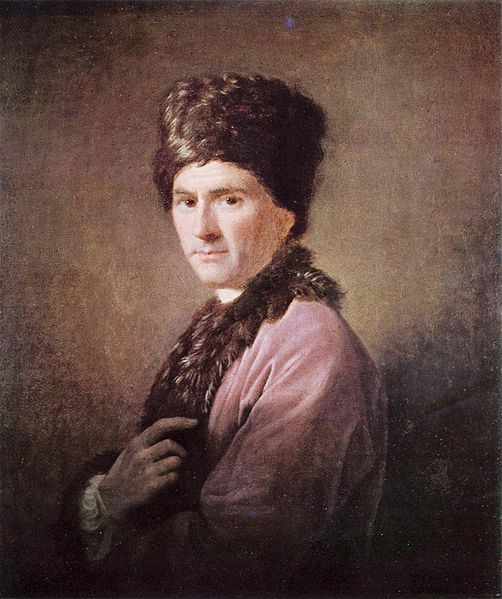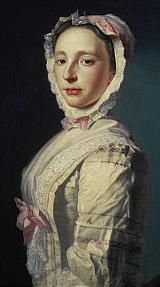<Back to Index>
- Physician Rudolf Ludwig Karl Virchow, 1821
- Painter Allan Ramsay, 1713
- President of the Slovak State Jozef Tiso, 1887
PAGE SPONSOR
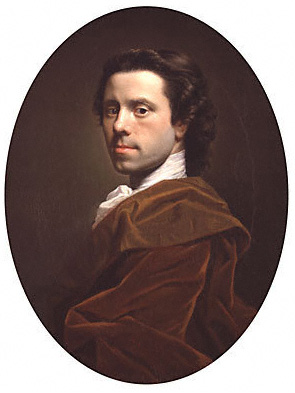
Allan Ramsay (13 October 1713 – 10 August 1784) was a Scottish portrait-painter.
Allan Ramsay was born in Edinburgh, Scotland, the eldest son of Allan Ramsay, poet and author of The Gentle Shepherd. From the age of twenty he studied in London under the Swedish painter Hans Hysing, and at the St. Martin's Lane Academy; leaving in 1736 for Rome and Naples, where he worked for three years under Francesco Solimena and Imperiali (Francesco Fernandi). On his return in 1738 he first settled in Edinburgh, attracting attention by his head of Duncan Forbes of Culloden and his full-length portrait of the Duke of Argyll, later used on Royal Bank of Scotland banknotes. He later moved to London, where he was employed by the Duke of Bridgewater. His pleasant manners and varied culture, not less than his artistic skill, contributed to render him popular. His only serious competitor was Thomas Hudson, with whom he shared a drapery painter, Joseph van Aken. In 1739 he married his first wife, Anne Bayne, the daughter of a professor of Scots law at Edinburgh, Alexander Bayne of Rires (c.1684 – 1737), and Mary Carstairs (1695? – 1759). None of their 3 children survived childhood, and she died on 4 February 1743 giving birth to the third of them.
One of his drawing pupils was Margaret Lindsay, eldest daughter of Sir Alexander Lindsay of Evelick and Amelia Murray (granddaughter to David Murray, 5th Viscount of Stormont and sister to the naval officer John Lindsay). He later eloped with her and on 1 March 1752 they married in the Canongate Kirk, Edinburgh, though her father never forgave her for marrying an artist. Ramsay already had to maintain a daughter from his previous marriage as well as his two surviving sisters, but told Sir Alexander that he could provide Margaret with an annual income of £100 which would increase ‘as my affairs increase, and I thank God, they are in a way of increasing’ and that his only motive for the marriage was ‘my love for your Daughter, who, I am sensible, is entitled to much more than ever I shall have to bestow upon her’. There were three surviving children from their long and happy marriage, Amelia (1755 – 1813), Charlotte (1758 – 1818?), and John (1768 – 1845).
Ramsay and his new wife spent 1754 – 1757 together in Italy, going to Rome, Florence, Naples and Tivoli, researching, painting and drawing old masters, antiquities and archaeological sites, and (to earn an income) painting Grand Tourists' portraits. This and other trips to Italy involved more literary and antiquarian research than art. After their return, he was in 1761 appointed to succeed John Shackelton as Principal Painter in Ordinary to George III, beating Hudson to the post; and so fully employed was he on the royal portraits which the king was in the habit of presenting to ambassadors and colonial governors, that he was forced to take advantage of the services of a host of assistants — of whom David Martin and Philip Reinagle are the best known.
He gave up painting in about 1770 to concentrate on literary pursuits, his health shattered by an accidental dislocation of the right arm and his second wife's death in 1782. With unflinching pertinacity, he struggled until he had completed a likeness of the king upon which he was engaged at the time, and then started for his beloved Italy, leaving behind him a series of fifty royal portraits to be completed by his assistant Reinagle. For several years he lingered in the south, his constitution finally broken. He died at Dover on 10 August 1784.
Among
his most satisfactory productions are some of his earlier ones, such as
the full-length of the duke of Argyll, and the numerous bust portraits
of Scottish gentlemen and their ladies which he executed before
settling in London. They are full of both grace and individuality; the
features show excellent draughtsmanship; and the flesh painting is firm
and sound in method, though frequently tending a little to hardness and
opacity. His full-length of Lady Mary Coke is
remarkable for the skill and delicacy with which the white satin
drapery is managed; while in the portrait of his brown-eyed second wife
Margaret, in the Scottish National Gallery,
we have a sweetness and tenderness which shows the painter at his
highest. The portrait of his wife also shows the influence of French
art, an influence which helped greatly to form the practice of Ramsay,
and which is even more clearly visible in the large collection of his
sketches in the possession of the Royal Scottish Academy and
the Board of Trustees, Edinburgh. Indeed, all his later portraits are
characterised by their French elegance and soft colours. Allan Ramsay was a noted abolitionist and campaigner for the abolition of slavery. Mario de Valdes y Cocom, a historian of the African diaspora, has argued that in several paintings of Queen Charlotte Ramsay deliberately tended to emphasize "mulatto features" which the queen supposedly inherited from a 16th Century African ancestor. Some of these paintings were reportedly sent on to the colonies, to be used by abolitionists as a de facto support
for their cause - i.e., that Africans ought not to be kept in
servitutde or considered "inferior" when the Queen herself was (at
least partially) one of them.
